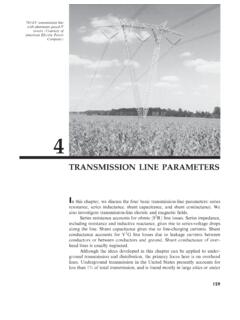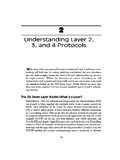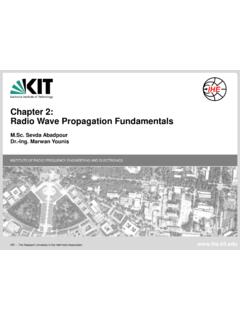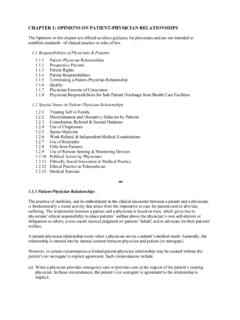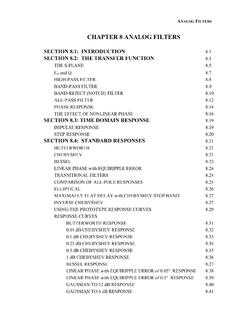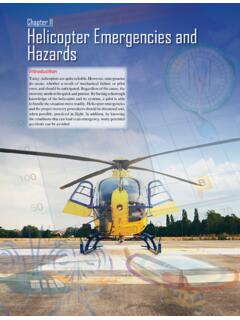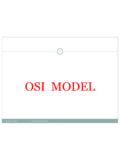Transcription of Chapter 2 Sampled Data Systems F - Analog Devices
1 FUNDAMENTALS OF Sampled DATA Systems . Analog -DIGITAL CONVERSION. 1. Data Converter History 2. Fundamentals of Sampled Data Systems Coding and Quantizing Sampling Theory Data Converter AC Errors General Data Converter Specifications Defining the Specifications 3. Data Converter Architectures 4. Data Converter Process Technology 5. Testing Data Converters 6. Interfacing to Data Converters 7. Data Converter Support Circuits 8. Data Converter Applications 9. Hardware Design Techniques I. Index Analog -DIGITAL CONVERSION. FUNDAMENTALS OF Sampled DATA Systems . CODING AND QUANTIZING. Chapter 2. FUNDAMENTALS OF Sampled DATA. Systems . SECTION : CODING AND QUANTIZING. Walt Kester, Dan Sheingold, James Bryant Analog -to-digital converters (ADCs) translate Analog quantities, which are characteristic of most phenomena in the "real world," to digital language, used in information processing, computing, data transmission, and control Systems .
2 Digital-to- Analog converters (DACs) are used in transforming transmitted or stored data, or the results of digital processing, back to "real-world" variables for control, information display, or further Analog processing. The relationships between inputs and outputs of DACs and ADCs are shown in Figure VREF. MSB +FS. DIGITAL N-BIT Analog RANGE. INPUT DAC OUTPUT (SPAN). N-BITS. LSB 0 OR FS. VREF. MSB. +FS. Analog N-BIT DIGITAL. RANGE OUTPUT. (SPAN). INPUT ADC N-BITS. LSB. 0 OR FS. Figure : Digital-to- Analog Converter (DAC) and Analog -to-Digital Converter (ADC) Input and Output Definitions Analog input variables, whatever their origin, are most frequently converted by transducers into voltages or currents.
3 These electrical quantities may appear (1) as fast or slow "dc" continuous direct measurements of a phenomenon in the time domain, (2) as modulated ac waveforms (using a wide variety of modulation techniques), (3) or in some combination, with a spatial configuration of related variables to represent shaft angles. Analog -DIGITAL CONVERSION. Examples of the first are outputs of thermocouples, potentiometers on dc references, and Analog computing circuitry; of the second, "chopped" optical measurements, ac strain gage or bridge outputs, and digital signals buried in noise; and of the third, synchros and resolvers. The Analog variables to be dealt with in this Chapter are those involving voltages or currents representing the actual Analog phenomena.
4 They may be either wideband or narrowband. They may be either scaled from the direct measurement, or subjected to some form of Analog pre-processing, such as linearization, combination, demodulation, filtering, sample-hold, etc. As part of the process, the voltages and currents are "normalized" to ranges compatible with assigned ADC input ranges. Analog output voltages or currents from DACs are direct and in normalized form, but they may be subsequently post-processed ( , scaled, filtered, amplified, etc.). Information in digital form is normally represented by arbitrarily fixed voltage levels referred to "ground," either occurring at the outputs of logic gates, or applied to their inputs.
5 The digital numbers used are all basically binary; that is, each "bit," or unit of information has one of two possible states. These states are "off," "false," or "0," and "on," "true," or "1." It is also possible to represent the two logic states by two different levels of current, however this is much less popular than using voltages. There is also no particular reason why the voltages need be referenced to ground as in the case of emitter-coupled-logic (ECL), positive-emitter-coupled-logic (PECL) or low-voltage- differential-signaling logic (LVDS) for example. Words are groups of levels representing digital numbers; the levels may appear simultaneously in parallel, on a bus or groups of gate inputs or outputs, serially (or in a time sequence) on a single line, or as a sequence of parallel bytes ( , "byte-serial") or nibbles (small bytes).
6 For example, a 16-bit word may occupy the 16 bits of a 16-bit bus, or it may be divided into two sequential bytes for an 8-bit bus, or four 4-bit nibbles for a 4-bit bus. Although there are several Systems of logic, the most widely used choice of levels are those used in TTL (transistor-transistor logic) and, in which positive true, or 1, corresponds to a minimum output level of + V (inputs respond unequivocally to "1". for levels greater than V); and false, or 0, corresponds to a maximum output level of + V (inputs respond unequivocally to "0" for anything less than + V). It should be noted that even though CMOS is more popular today than TTL, CMOS logic levels are generally made to be compatible with the older TTL logic standard.
7 A unique parallel or serial grouping of digital levels, or a number, or code, is assigned to each Analog level which is quantized ( , represents a unique portion of the Analog range). A typical digital code would be this array: a7 a6 a5 a4 a3 a2 a1 a0 = 1 0 1 1 1 0 0 1. It is composed of eight bits. The "1" at the extreme left is called the "most significant bit". (MSB, or Bit 1), and the one at the right is called the "least significant bit" (LSB, or FUNDAMENTALS OF Sampled DATA Systems . CODING AND QUANTIZING. bit N: 8 in this case). The meaning of the code, as either a number, a character, or a representation of an Analog variable, is unknown until the code and the conversion relationship have been defined.
8 It is important not to confuse the designation of a particular bit ( , Bit 1, Bit 2, etc.) with the subscripts associated with the "a" array. The subscripts correspond to the power of 2 associated with the weight of a particular bit in the sequence. The best-known code (other than base 10) is natural or straight binary (base 2). Binary codes are most familiar in representing integers; , in a natural binary integer code having N bits, the LSB has a weight of 20 ( , 1), the next bit has a weight of 21 ( , 2), and so on up to the MSB, which has a weight of 2N 1 ( , 2N/2). The value of a binary number is obtained by adding up the weights of all non-zero bits. When the weighted bits are added up, they form a unique number having any value from 0 to 2N 1.
9 Each additional trailing zero bit, if present, essentially doubles the size of the number. In converter technology, full-scale (abbreviated FS) is independent of the number of bits of resolution, N. A more useful coding is fractional binary which is always normalized to full-scale. Integer binary can be interpreted as fractional binary if all integer values are divided by 2N. For example, the MSB has a weight of ( , 2(N 1)/2N = 2 1), the next bit has a weight of ( , 2 2), and so forth down to the LSB, which has a weight of 1/2N. ( , 2 N). When the weighted bits are added up, they form a number with any of 2N. values, from 0 to (1 2 N) of full-scale. Additional bits simply provide more fine structure without affecting full-scale range.
10 The relationship between base-10 numbers and binary numbers (base 2) are shown in Figure along with examples of each. WHOLE NUMBERS: Number10 = aN 12N 1 + aN 22N 2 + +a121 + a020. MSB LSB. Example: 10112 = (1 23) + (0 22)+ (1 21)+ (1 20). = 8 + 0 + 2 + 1 = 1110. FRACTIONAL NUMBERS: Number10 = aN 12 1 + aN 2 2 2 + + a12 (N 1) + a02 N. MSB LSB. Example: = (1 ) + (0 ) + (1 ) + (1 ). = + 0 + + = Figure : Representing a Base-10 Number with a Binary Number (Base 2). Unipolar Codes In data conversion Systems , the coding method must be related to the Analog input range (or span) of an ADC or the Analog output range (or span) of a DAC. The simplest case is Analog -DIGITAL CONVERSION. when the input to the ADC or the output of the DAC is always a unipolar positive voltage (current outputs are very popular for DAC outputs, much less for ADC inputs).











